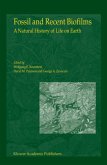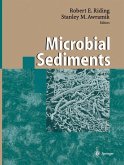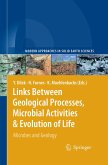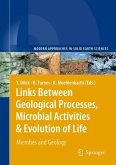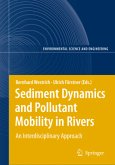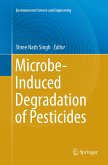MICROBIAL BIOFILMS: PROTECTIVE NICHES IN ANCIENT AND MODERN GEOMICROBIOLOGY J. W. Costerton and Paul Stoodley Center for Biofilm Engineering Montana State University As this book is published based on discussions of a conference that was held in 2001, it may be useful to provide an update on the most recent revelations about biofilms, so that this excellent exposition of the contribution of microbial biofilms to geological processes may be placed in a modem context. The importance of the contribution of microbial biofilms to global processes is only now being appreciated as it is revealed that all terrestrial surfaces are teeming with microbial life in the form of biofilm communities. These communities live on soil particles, in rock fissures, marine and river sediments and at the very extremes of terrestrial habitats from inside Antarctic ice to the walls of deep sea hydrothermal vents. The contribution of these biofilm communities generally went unrecognized because it was the water that was where microbiologists looked for life, not the surfaces, although, evidence of the early association of microbes with surfaces was in fact present in the fossil record (Rasmussen, 2000; Reysenbach, and Cady, 2001). It is also revealing that biofilm formation is found in prokaryotes from the most deeply rooted branches of the phylogenetic tree in both the Archaea and Bacteria kingdoms, the Korarchaeota and Aquificales respectively (Jahnke et al. 2001; Reysenbach et al. 2000).
"Fossil and Recent Biofilms provides a smørgasbord of data on microbial communities. Students of microbial ecology, evolution, biogeochemistry, and sedimentary geology will all find this volume valuable. Those who would integrate these disciplines will find it indispensable."
(Andrew H. Knoll, Harvard University, Cambridge, MA, USA)
"Virtually all the world's experts in the area of ancient and fossil biofilms contributed to a 33 chapter compendium that offers something for everyone. The subjects range from definitions of terms, to the history and philosophy of biofilms, to the implications of biofilms for the evolution of microbes, the evolution of the Earth, and even the search for extraterrestrial life. The preface by Costerton and Stoodley is quite valuable in contrasting the "old" of this compendium with some of the "new" developments that are happening now, and even on the horizon. In the preface, biofilms are viewed as dynamic, evolving communities - sites for horizontal gene transfer and community adaptation and gene-swapping."
(Ken Nealson, University of Southern California, Los Angeles, CA, USA)
"Overall diversified and high quality pictures illustrate an update synthesis of the modern concept of microbial biofilms in geomicrobiology which target both researchers, lecturers and students."
(F. Garabétian, Université Paul Sabatier, Toulouse, France. Int. Journal of Limnology, 2004, 40 (2).)
(Andrew H. Knoll, Harvard University, Cambridge, MA, USA)
"Virtually all the world's experts in the area of ancient and fossil biofilms contributed to a 33 chapter compendium that offers something for everyone. The subjects range from definitions of terms, to the history and philosophy of biofilms, to the implications of biofilms for the evolution of microbes, the evolution of the Earth, and even the search for extraterrestrial life. The preface by Costerton and Stoodley is quite valuable in contrasting the "old" of this compendium with some of the "new" developments that are happening now, and even on the horizon. In the preface, biofilms are viewed as dynamic, evolving communities - sites for horizontal gene transfer and community adaptation and gene-swapping."
(Ken Nealson, University of Southern California, Los Angeles, CA, USA)
"Overall diversified and high quality pictures illustrate an update synthesis of the modern concept of microbial biofilms in geomicrobiology which target both researchers, lecturers and students."
(F. Garabétian, Université Paul Sabatier, Toulouse, France. Int. Journal of Limnology, 2004, 40 (2).)
"Fossil and Recent Biofilms provides a smørgasbord of data on microbial communities. Students of microbial ecology, evolution, biogeochemistry, and sedimentary geology will all find this volume valuable. Those who would integrate these disciplines will find it indispensable." (Andrew H. Knoll, Harvard University, Cambridge, MA, USA) "Virtually all the world's experts in the area of ancient and fossil biofilms contributed to a 33 chapter compendium that offers something for everyone. The subjects range from definitions of terms, to the history and philosophy of biofilms, to the implications of biofilms for the evolution of microbes, the evolution of the Earth, and even the search for extraterrestrial life. The preface by Costerton and Stoodley is quite valuable in contrasting the "old" of this compendium with some of the "new" developments that are happening now, and even on the horizon. In the preface, biofilms are viewed as dynamic, evolving communities - sites for horizontal gene transfer and community adaptation and gene-swapping." (Ken Nealson, University of Southern California, Los Angeles, CA, USA) "Overall diversified and high quality pictures illustrate an update synthesis of the modern concept of microbial biofilms in geomicrobiology which target both researchers, lecturers and students."(F. Garabétian, Université Paul Sabatier, Toulouse, France. Int. Journal of Limnology, 2004, 40 (2).)


